Behind the wheel of the First-Ever Mazda CX-90
Behind the wheel of the First-Ever Mazda CX-90
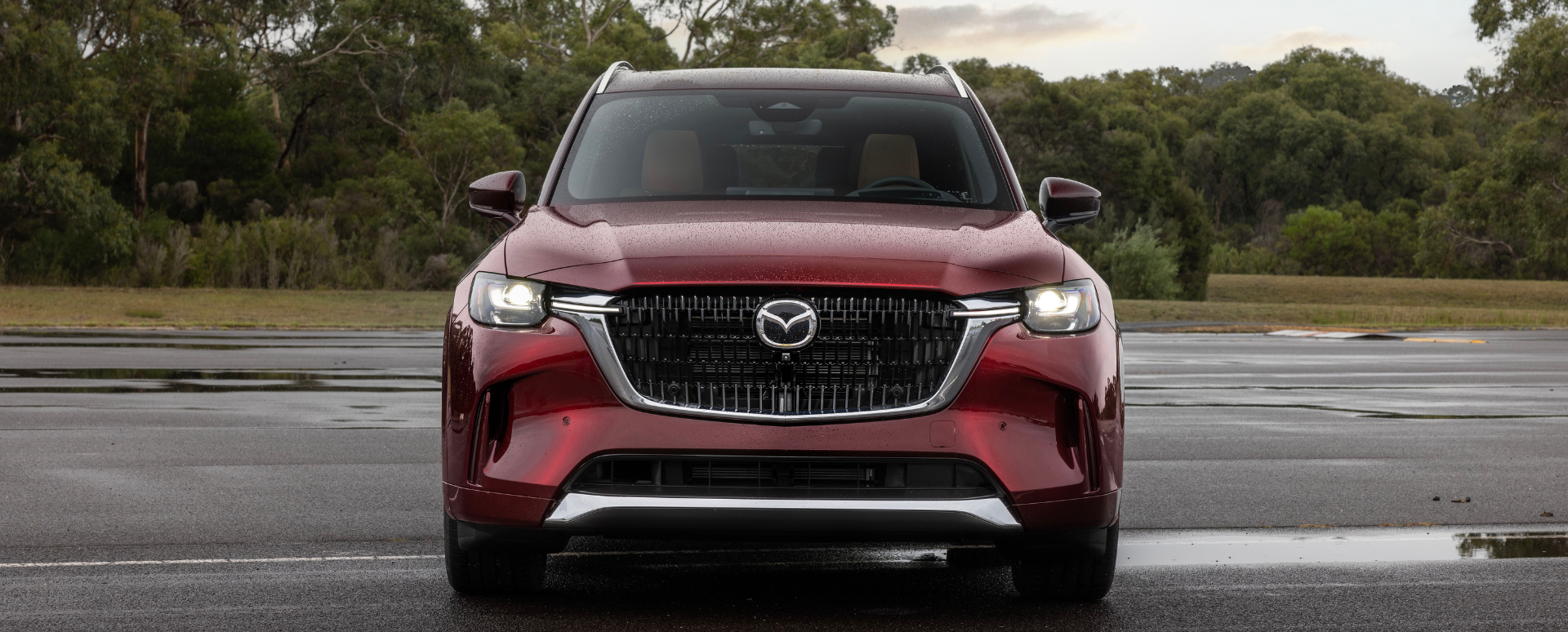

Behind the wheel of the First-Ever Mazda CX-90
Behind the wheel of the First-Ever Mazda CX-90


A taste of what’s to come before it arrives on Australian roads
Now look, obviously I don’t recommend that you try this, but if you were to shut your eyes, just briefly, while driving Mazda’s new CX-90, you could - aside from being slightly frightened - definitely think you were driving a thrusting, exciting-sounding sports car, rather than the biggest SUV the company has ever produced.
That’s because your ears will be able to focus on the kinds of noises you can only get from a truly glorious 3.3-litre straight six-cylinder petrol power plant, which, with 254kW and 500Nm on tap, is the most powerful engine Mazda has ever fitted to a production car.
Truly, this CX-90 is a big deal for the perfection-seeking missile that is Mazda; not just the biggest, most luxurious and grunt-tastic car the company has ever built, but arguably the best car it’s yet produced.
With its incredibly spacious and luxurious cabin (the third row seats don’t just offer head and shoulder room, they’re properly padded and comfortable) and premium-quality fit, finish and features, this car - built on Mazda’s new Large Platform architecture - takes the brand to a whole new level.
With its incredibly spacious and luxurious cabin (the third row seats don’t just offer head and shoulder room, they’re properly padded and comfortable) and premium-quality fit, finish and features, this car - built on Mazda’s new Large Platform architecture - takes the brand to a whole new level.
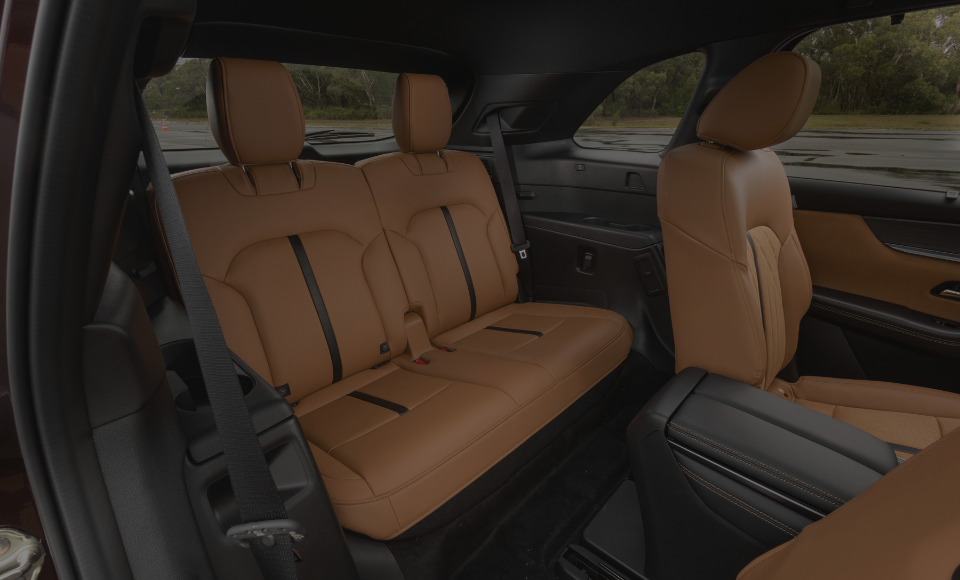

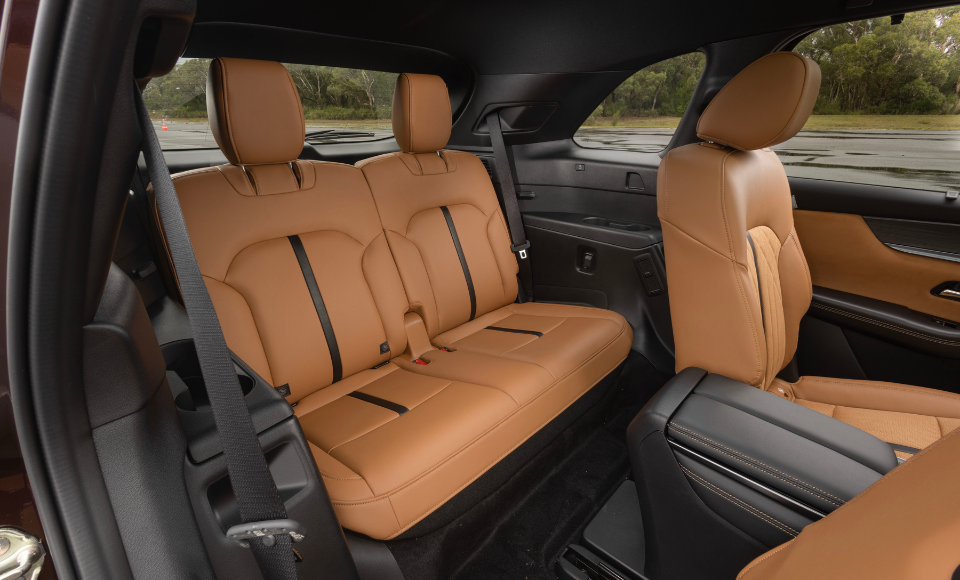
With its incredibly spacious and luxurious cabin (the third row seats don’t just offer head and shoulder room, they’re properly padded and comfortable) and premium-quality fit, finish and features, this car - built on Mazda’s new Large Platform architecture - takes the brand to a whole new level.
You can feel it in every soft surface you touch, and the classy steering wheel in particular, and in the solid thunk the vast doors make when you shut them – even the bank-vault-like sound you get when you unlatch the door handle again.
Most vitally, though, Mazda has obviously gone to an enormous amount of trouble, and expense, to make sure you feel that new level of quality and the sportiness of that brilliant six-cylinder engine when you’re in it.
I was able to do the eyes-shutting experiment because we got to drive a very early, left-hand-drive example of the CX-90 behind closed doors and far from police-prying eyes at the Lang Lang vehicle testing facility in Victoria.
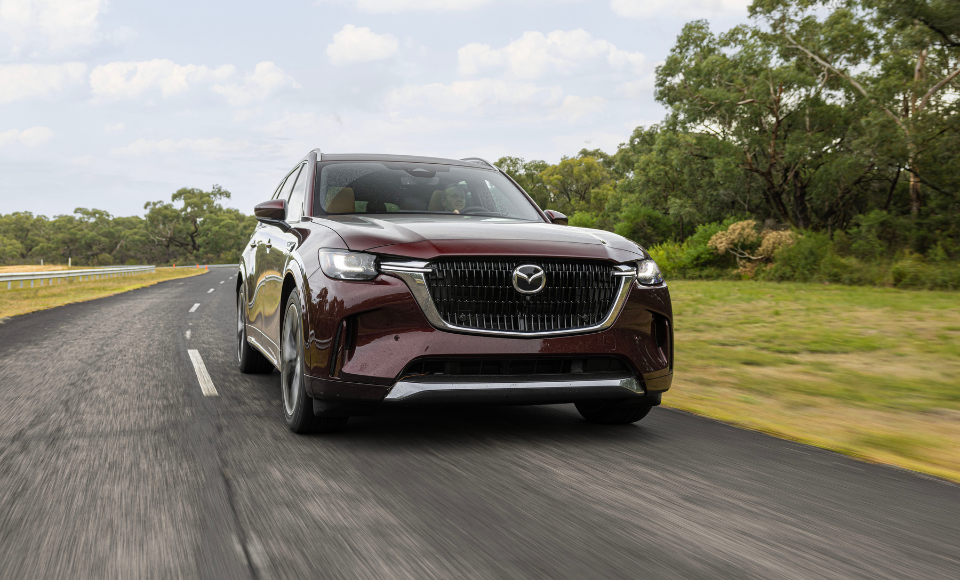
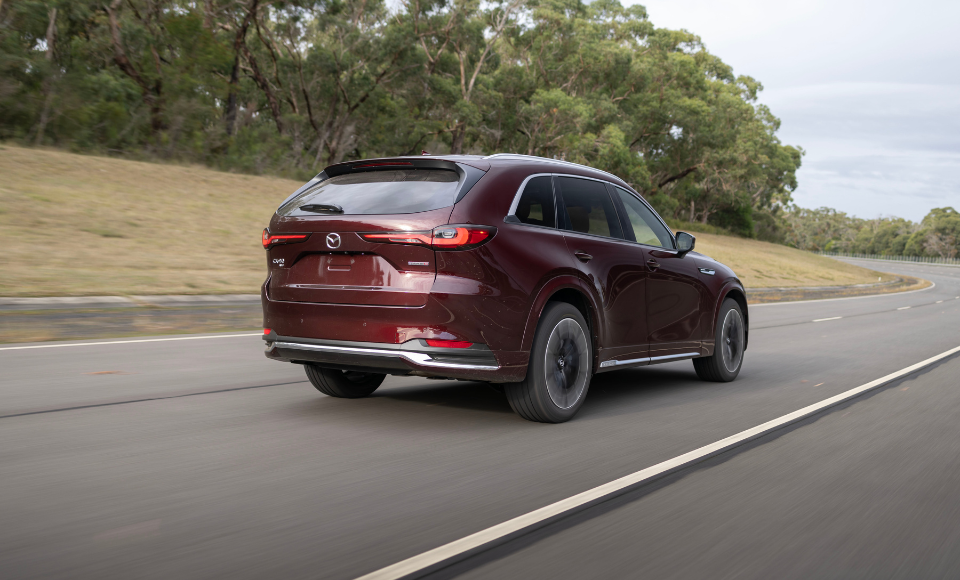
Lang Lang features a NASCAR-style banked speed bowl, which allows you not only to explore higher speeds - even at 140km/h the CX-90 would leap ahead with a howl of joy from its rev-happy engine - but, if you get to the top of the banking and sit on exactly 163km/h (100mph in the old money) the steering becomes neutral and the Mazda basically drives itself around the 4.7km loop of banking.
Plant your foot at those speeds, or at any time when in Sport mode, and the 3.3-litre, longitudinally mounted engine makes the kind of noises that motoring enthusiasts live for; metallic snarls of enjoyment. And yet at cruising speeds, around town or when driven gently the CX-90’s cabin is whisper quiet and you’d barely know you have so much sporty performance on tap.
The speed bowl also allowed us the chance to test the vehicle’s Lane Tracing system at a more sensible 110km/h - take your hands off the wheel, briefly, and you can watch the ingenious system carefully, and unintrusively, guiding you back to the centre of your lane.
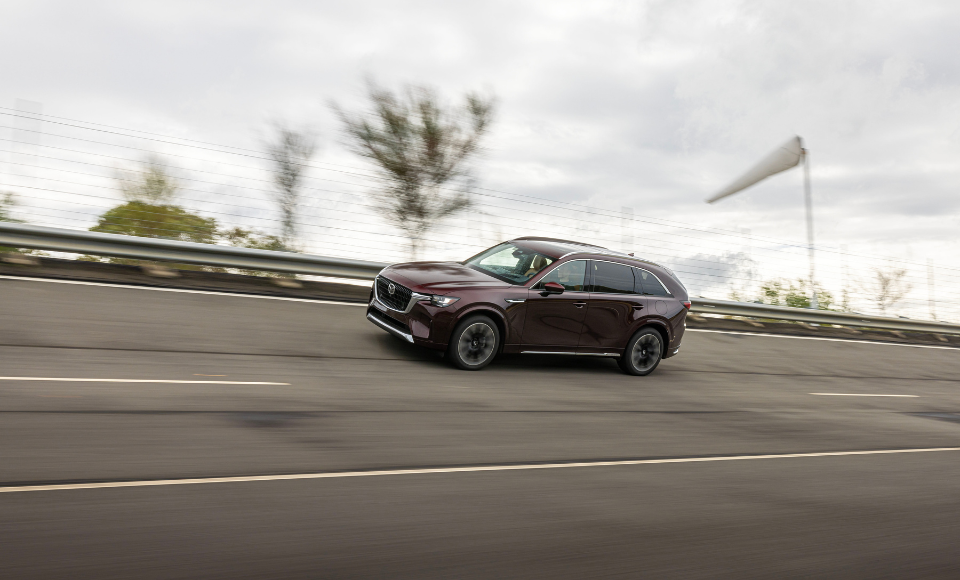
What is clear about the Mazda CX-90 is that everything has been done for a reason, and that an incredible amount of thought, technology and effort has gone into making this very large SUV (it’s 5.1m long, 1.7m high and 2m wide, which means a lot of human and luggage space inside) feel involving to drive.
The six-cylinder e-Skyactiv G turbocharged petrol engine, which uses 48-volt Mild Hybrid Boost technology to provide impressive fuel economy of just 8.2 litres per 100km (the same as a top-spec Mazda CX-5) is the most obvious star of the CX-90 show, but ask Jay Chen, manager of powertrain performance at Mazda R&D, and he’ll tell you that it’s about more than just its power, and economy, figures.
“The longitudinal layout allows us to move this slender engine and transmission as far back into the chassis as possible for better weight distribution and handling,” he explains.
Speaking of the transmission, Mazda went to the considerable trouble of designing and producing its own, unique unit for this car, as opposed to many competitors who merely buy an existing unit off the shelf. Chen explains that this also allowed them to make the eight-speed automatic the size and shape they wanted, which meant, again, that it could be optimally positioned, as far back as possible under the car, for the best weight distribution.
“This innovative new, compact and unique transmission, which uses a wet clutch instead of a conventional torque converter, also provides a more direct feeling for the driver that emphasises acceleration and maximises the potential of the engine, but with a greater sense of rhythm as it works up and down the gears, much like a manual gearbox,” Chen adds.
And he’s right, too, because choosing to shift gears yourself, via the paddles on the steering wheel, does provide an even more involving, and aurally sonorous, driving experience.
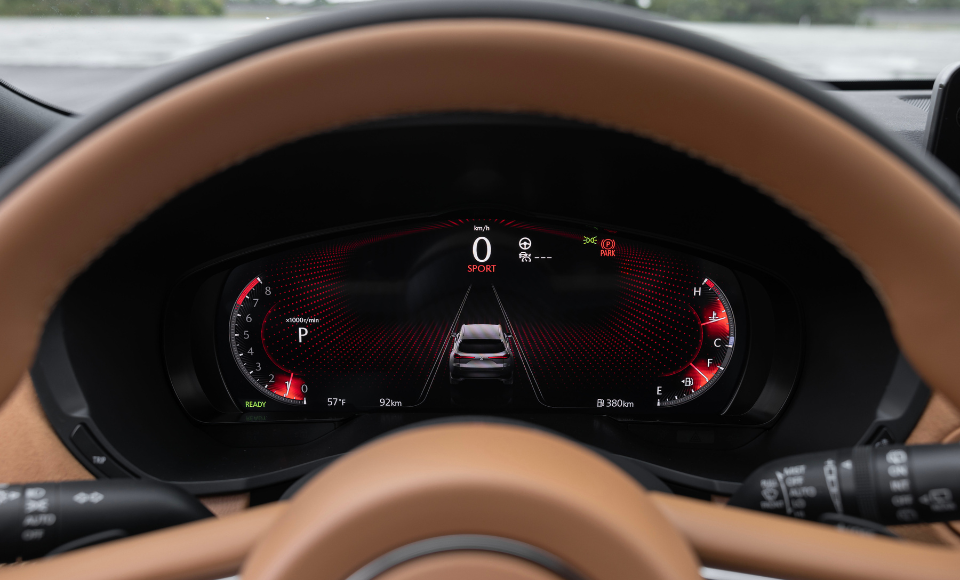

While it is an all-wheel-drive SUV, the CX-90 is built on a rear-wheel-drive platform and takes full advantage of that layout, as Dave Coleman, manager of vehicle dynamics for Mazda R&D, explains.
“Most enthusiasts intuitively understand that a rear-wheel-drive platform is somehow superior, but there are many reasons we chose to use it with the CX-90,” he said.
“For a start, it’s about balancing the load across all four tyres. A front-wheel drive (with an engine mounted sideways between the front wheels) set-up puts all the weight on the front tyres; they take about 60 per cent of the weight, and then we ask them to take on the cornering and steering work as well, which is not ideal.
“With rear-wheel drive, the weight is further back, and the differential is actually between the rear wheels, which means that the weight is then shared between all four tyres, which means they can share the cornering load, which provides more cornering potential.”
Coleman goes on to point out that when we accelerate in a car, particularly in a large, tall SUV, the weight is thrown back on to the rear wheels, pushing them into the ground, so it makes sense for them to do the work of acceleration. A similar thing happens if you’re towing, of course.
A longitudinally mounted engine also means there’s more space for the front tyres to turn, allowing a sharper turning circle, and more room around the steering rack.
A longitudinally mounted engine also means there’s more space for the front tyres to turn, allowing a sharper turning circle, and more room around the steering rack.
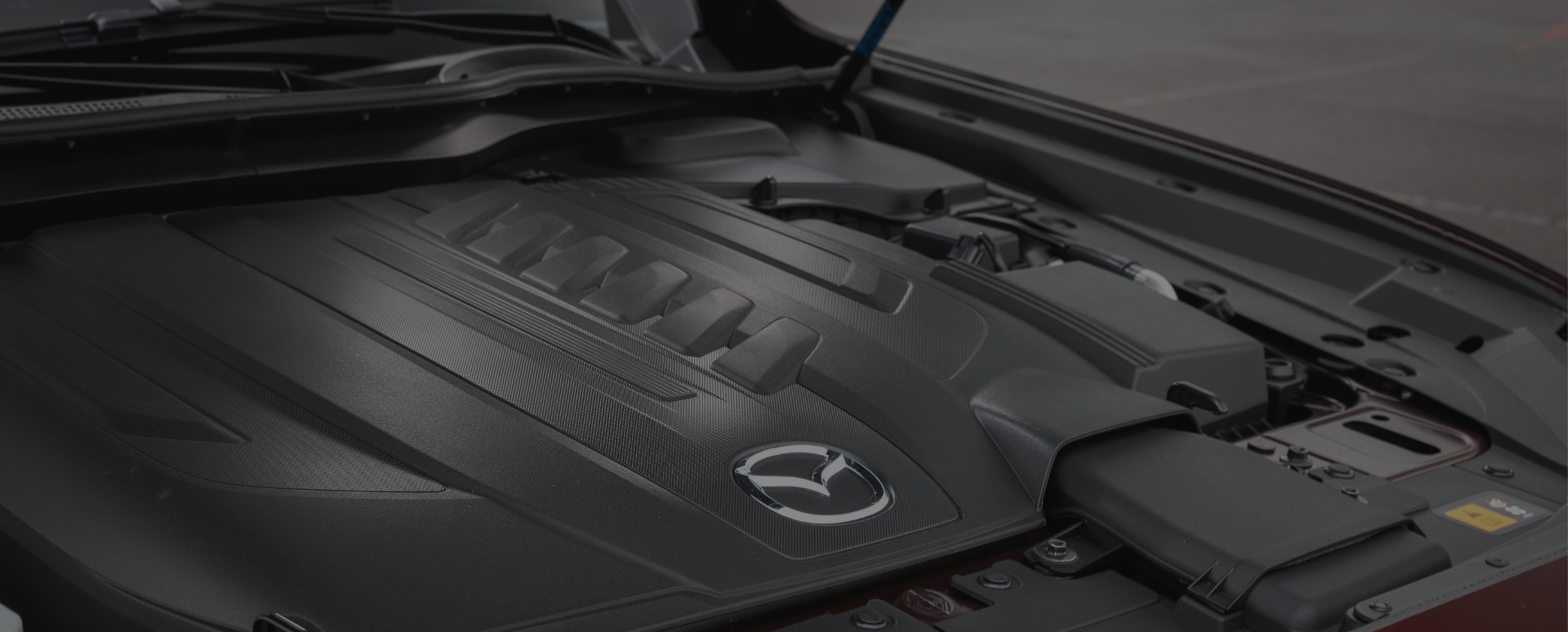

“This means we can attach the power-assist motor for the steering directly to the rack, rather than further up on the steering column, and this means we get better and more direct steering responses,” Coleman added.
The carefully calibrated layout of the CX-90 also leaves more room for “freedom of suspension design”, allowing Mazda to use a double wishbone set-up at the front - providing more grip, better ride quality and less friction - and a five-link rear suspension.
All of these layout advantages apply equally to a rear-drive car like the legendary MX-5, even though it shares no parts with the CX-90. It does, however, share a clever bit of software, first introduced by Mazda on the roadster – Kinematic Posture Control.
This system applies a carefully measured amount of braking to the inner rear wheel when the car senses high G-forces being applied in a corner, helping to pull that corner down and suppress body roll.
You can genuinely feel it working on the CX-90 as you corner at speeds that normally upset a vehicle of this size, and it means you can have a lot more fun than you initially expect.
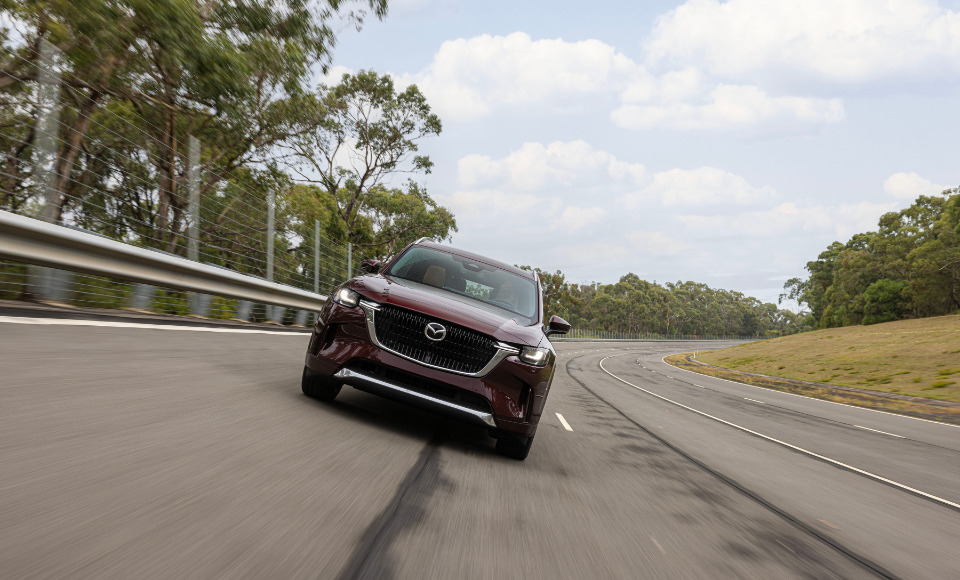
The CX-90 is also working to make cornering more enjoyable in other ways, particularly through its rear-biased all-wheel-drive system. While most of the time, in most conditions, the car feels like a rear-driven vehicle, with all of the intuitive benefits of that design, when the road surface changes or the software senses it is required for better corner tracing, the torque is instantaneously shifted between the front and rear wheels.
A clutch between the two axles allows torque to be distributed where it is most needed and the CX-90 is constantly using three algorithms to measure that need; one measuring weight transfer, another measuring the amount tyre slip and another that’s constantly monitoring the driver’s steering-wheel angle to predict their intentions.
The reasons that the Mazda CX-90 is so good, and involving, to drive are many and varied, then, but what sticks in the mind after fanging it around a private proving ground - one that offers road surfaces and corners of all kinds, and the ability to attack them at speed - what sticks with you are just how sporty it feels, and sounds.
In short, an SUV this big just shouldn’t be this much fun to drive, nor sound this enthusiastic and joyful, but I’m certainly glad that Mazda has managed to make one that is.